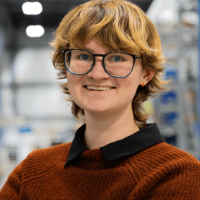You might hear of “island” wound dressings and picture something a tad more tropical. However, these medical products are a valuable staple to proper wound care.
For over 37 years, Strouse has converted custom medical adhesives, including a wide range of wound dressings and bandages.
If you’re interested in island wound dressings, stick around while we help you learn about their uses, materials, and how to source them.
What Is An Island Dressing For Wounds?
Island wound dressings consist of an “island” of absorbent material, such as a nonwoven pad, foam, hydrogel or hydrocolloid, surrounded by a ring of skin adhesive. These materials are designed to absorb fluids such as blood and exudate, while maintaining a moist, breathable environment, which is critical for effective healing.
When to Use an Island Wound Dressing
Healthcare providers use island dressings to treat mild to moderate open wounds with drainage. This may include:
- Superficial cuts or incisions
- IV sites (e.g., catheters, peripheral IVs, etc.)
- Skin graft sites
- Medical device applications
- Varying degrees of ulcers and pressure sores
The “island,” or absorbent central feature, rests directly on the wound while the flexible adhesive border adheres to the body surface.
The space between the gauze and the adhesive border allows for breathability, and the rest of the wound site remains protected and relatively undisturbed during recovery.
Island Dressing Materials
Most island dressings consist of a skin-friendly adhesive and an absorbent nonwoven.
If you’ve worked with stick-to-skin adhesives before, you might be familiar with the different types of medical grade adhesives.
Skin-friendly silicone and acrylic are two prevalent types of skin adhesives. Generally, silicone is used for more gentle applications, yet it’s also more expensive than acrylic. Other factors to consider are the length of wear, patient skin type, and bonding strength you need.
The central component of an island dressing is composed of either a nonwoven pad, foam, hydrogel, or hydrocolloid with absorption characteristics . These materials soak up wound drainage and reduce the chances of infection while keeping the wound moist. The island dressings are typically encased in a heat sealed or cold sealed package to prevent contamination before use.
QUALITY REQUIREMENTS
Like many medical products, island wound dressings must follow specific manufacturing guidelines to prevent the risk of infection, including:
- Clean Room Manufacturing: A sterile environment that prevents the spread of large particles.
- Quality standards: Guidelines for how products are quality checked (poor quality standards may result in defective parts).
If you’re looking to build sterile wound dressings to your specifications, you’ll want to ensure you find the right medical converter for your project. You can begin by looking for converters with medical manufacturing capabilities.
Where To Find Island Dressings
First and foremost, the question is: How many island wound dressings do you need?
If you’re looking for a single box of island dressings of a standard design, size, and material, then you should be able to order them from online medical retailers.
However, if you’re looking for something of a higher quantity or hoping to get it more specialized, consider using an adhesive converter.
Adhesive converters specialize in transforming raw materials into custom medical products. Island dressings require manufacturing techniques such as island placement, so if you’re interested in developing your project or design, reach out to an expert converter today.
In Conclusion
Now that you know more about adhesive island wound dressings, you’re ready to find what you need.
For more information on how to develop a custom wound solution, consider scheduling a consultation to discuss your project with a converter. From the initial design to the manufacturing process, a converter will walk you through the steps of building a medical product.
You can check out our Learning Center to learn more about wound dressings and other adhesive healthcare solutions.







